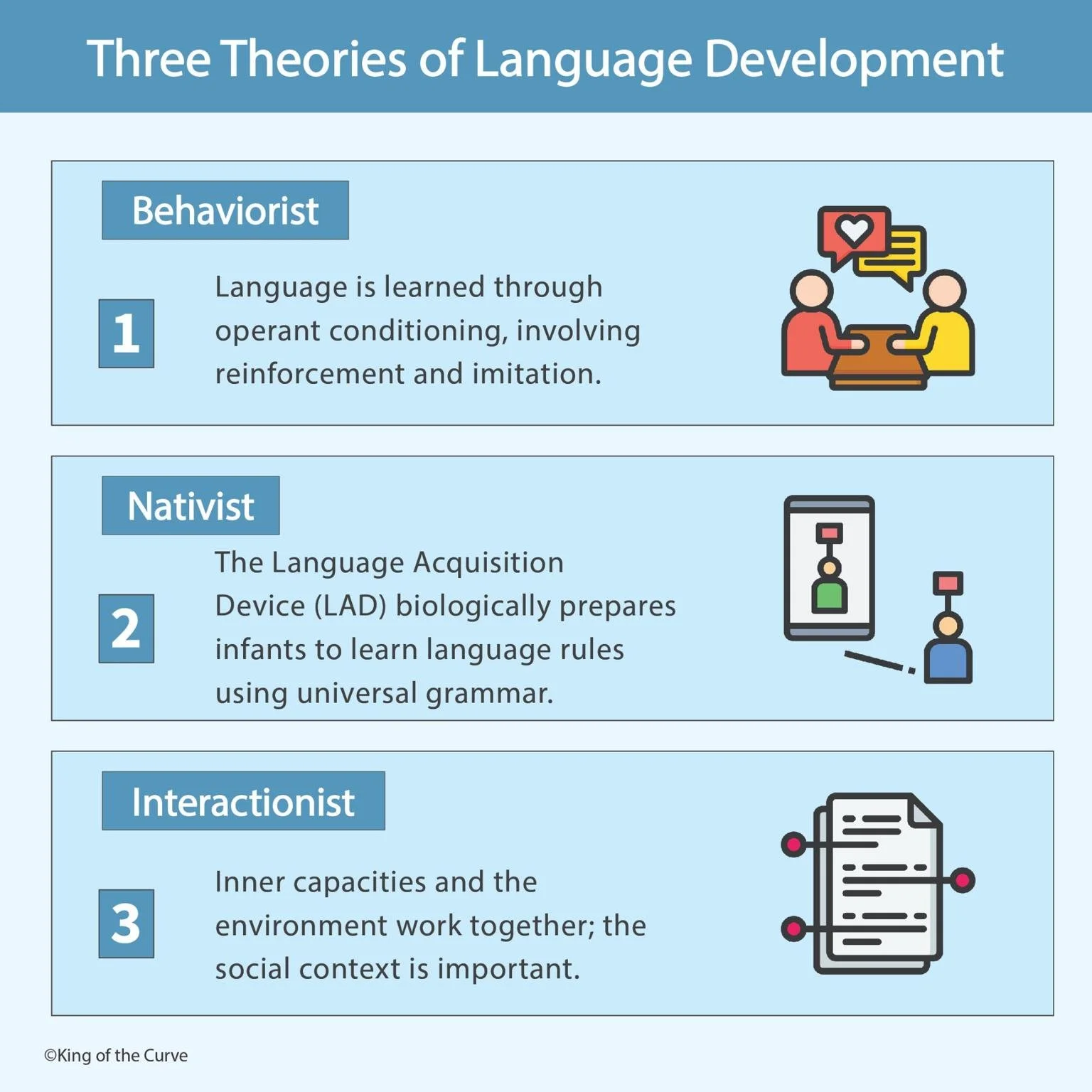🧠 Three Theories of Language Development: MCAT Study Breakdown
anguage is a fundamental aspect of human cognition and communication, and understanding how it develops is crucial for MCAT prep. Theories of language development appear in Psychology and Sociology sections and test your grasp of biological, behavioral, and sociocultural perspectives. This blog unpacks the three dominant theories—Behaviorist, Nativist, and Interactionist—along with MCAT-style strategies, visuals, and comparisons.
🗣️ What Are the Theories of Language Development?
Here's a breakdown of the three major approaches to how we acquire language:
| Theory | Core Belief | Key Contributors | MCAT Focus |
|---|---|---|---|
| Behaviorist | Language is learned through reinforcement and imitation. | B.F. Skinner | Learning and conditioning |
| Nativist | We’re biologically programmed with a Language Acquisition Device (LAD). | Noam Chomsky | Universal grammar, critical periods |
| Interactionist | Language develops from both innate abilities and social interaction. | Lev Vygotsky, Bruner | Environment + biology |
🧪 MCAT Tip: Memory Clue
Behaviorist = B.F. Skinner = Behavior
Nativist = Nature is in us
Interactionist = Interaction with environment matters
These clues help quickly differentiate the theories under time pressure.
🎯 MCAT-Relevant Scenarios
| Situation | MCAT-style Analysis |
|---|---|
| A child repeats a word and is rewarded | Behaviorist: reinforcement |
| An infant begins babbling at 8 months without teaching | Nativist: innate acquisition |
| A toddler develops language faster through social play | Interactionist: social exposure and development |
🧠 Strategy for MCAT Success
Focus on mechanism (reinforcement vs. innate vs. interaction).
Match theorist names with theory types.
Expect passage-based questions testing applications, not just definitions.
📝 Sample MCAT Question
Q: A psychologist believes language emerges from a combination of social interaction and biological maturation. Which theory best aligns with this view?
A. Behaviorist
B. Nativist
C. Interactionist ✅
D. Structuralist
Rationale: This approach emphasizes the importance of both internal mechanisms and external environment—hallmarks of the Interactionist perspective.
🧭 Summary
Language acquisition is explained by three main theories.
Know their core beliefs, founders, and applications.
Link each to real-world or experimental situations on the MCAT.
Frequently Asked Questions (FAQs)
-
Aim for 4-6 focused hours, ensuring you incorporate breaks to avoid burnout.
-
Practice mindfulness techniques, take practice exams under realistic conditions, and maintain a balanced lifestyle.
-
Set short-term goals, seek support from mentors, and reward yourself for small achievements.
-
Regular exercise improves focus, reduces stress, and enhances overall mental clarity.
-
KOTC offers personalized learning tools, gamification features, and adaptive question banks to help students stay on track without burnout.


